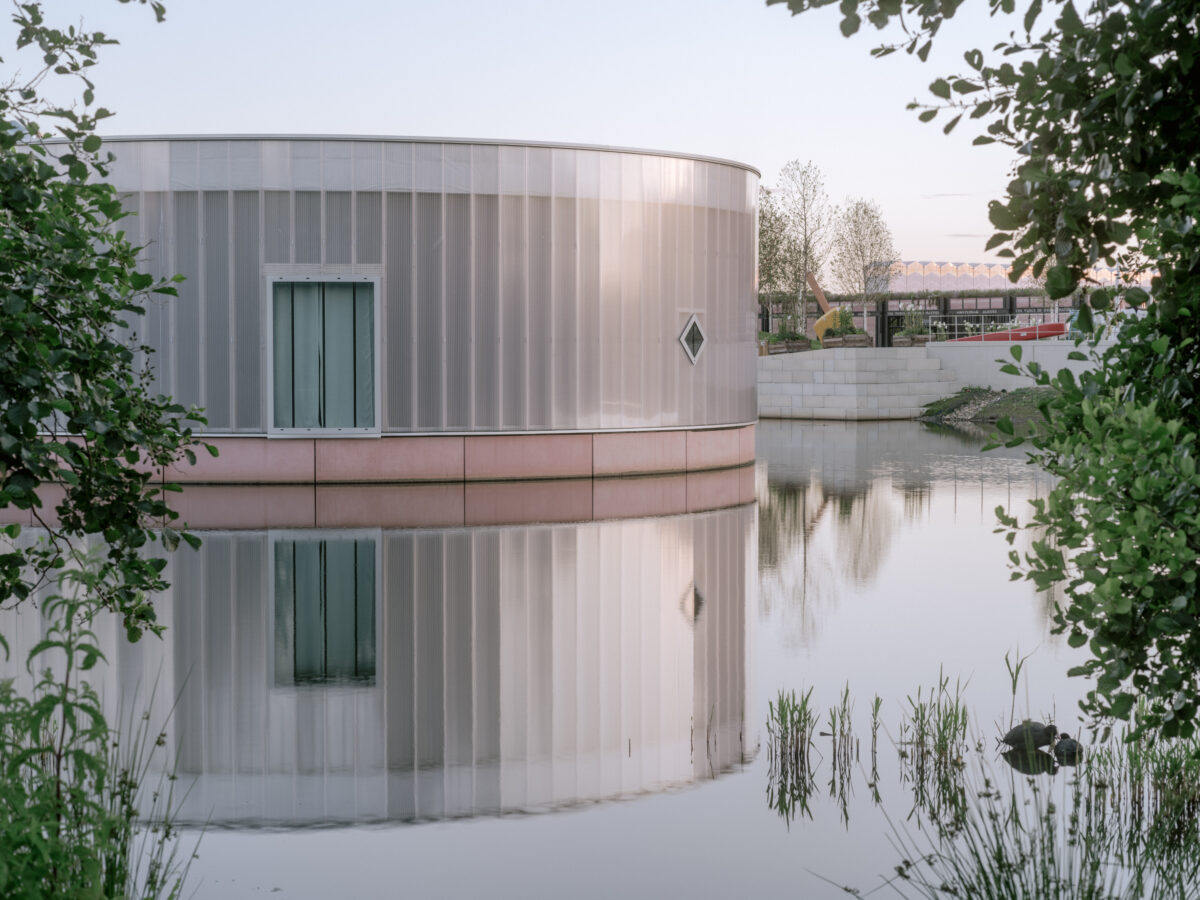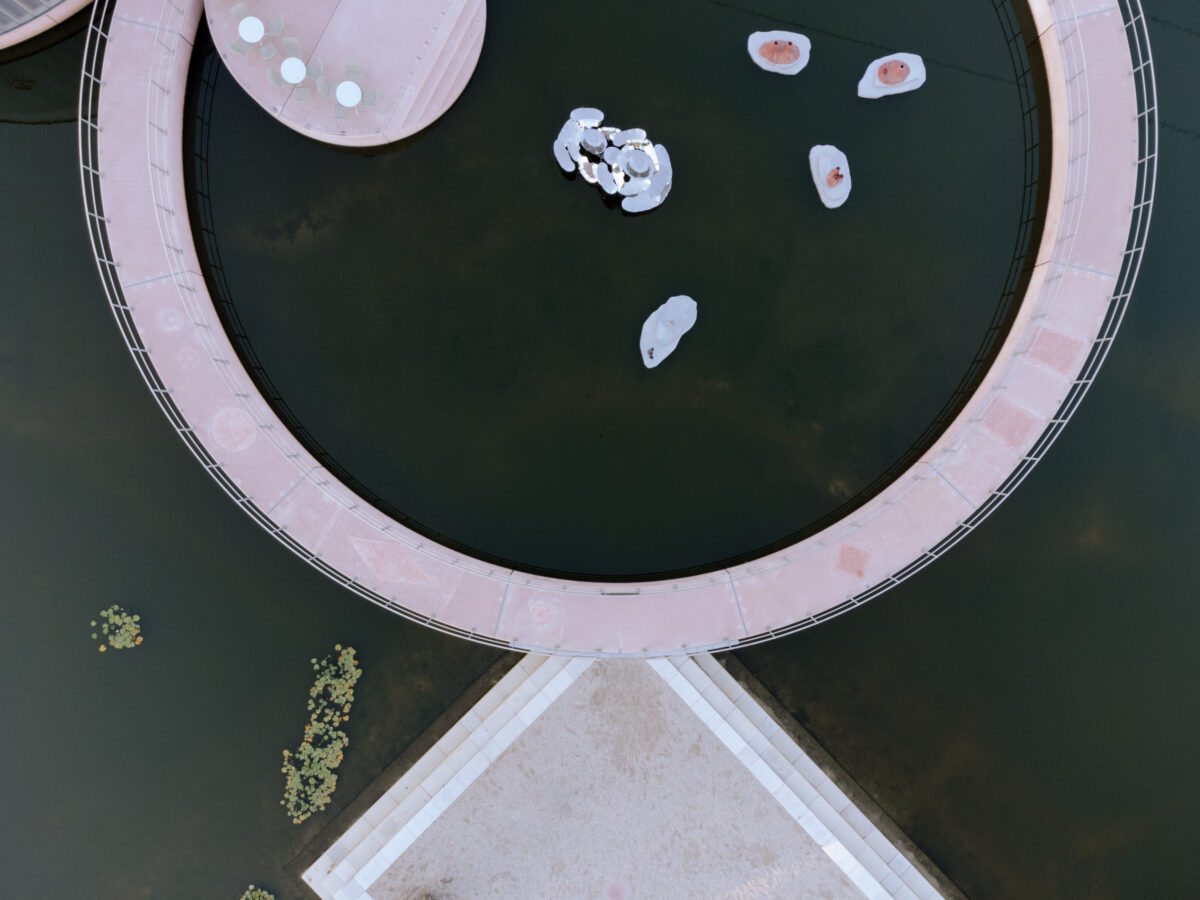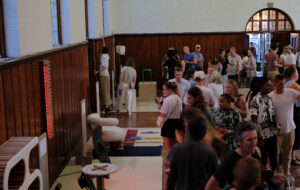Art Pavilion M is designed as a series of rings and, suitably for the region, floats on the Weerwater

Words by Joe Lloyd
Flevoland is a marvel of human ingenuity. The 12th province of the Netherlands was established in 1986, on land reclaimed from the sea, the largest such project in human history. Still more water than land, it is a wetland region used for farming and flower cultivation. Its main city, Almere, has rapidly expanded to become the fifth-largest in the country.
Yet Flevoland still lacks a notable museum. Local and national government decided to run a competition for a temporary pavilion, to test the waters. Earlier this year, the winning design was opened as part of the Floriade horticultural festival. Studio Ossidiana’s Art Pavilion M is a space for immersive art that, suitably for the region, floats on the Weerwater.
Inspired in part by land artist Robert Morris’ Observatory and IJsseloog silt despot island—both in Flevoland—it is designed as a series of rings. These are dubbed the Port, the Stage and the Observatory. The first is a circular pier and observation deck, which can be used to promenade, view art and even dock barges. The Stage, sitting inside the Port, is a terrace and event space.

The Observatory, which sits adjacent to the Port, is a pavilion in lightweight timber and polycarbonate that features the main exhibition rooms. Its translucent wall serves to reflect the surrounding water and vegetation, while a curtain inside has apertures that allow light to stream in various ways.
When visitors enter they face a service section, which is transversed to the left and right to enter the exhibition space. The four windows face the dawn and dusk axises of the solstices. Shells cover the roof, both a reference to the local shell-harvesting trade and to filter rainwater for local birds to consume.
Rotterdam-based Studio Ossidiana was founded in 2015 by Alessandra Covini and Giovanni Bellotti, both of whom have already garnered a range of honours. Their practice often focuses on playfulness, tactility and inclusivity, and aims to tell a story through materials.

Prior to the Art Pavilion M, many of their previous projects have featured in international exhibitions: the Pigeon Tower at the 2021 Venice Architecture Biennale and the floating garden Büyükada Songlines at the 2021 Istanbul Design Biennial.
Covini and Bellotti also engage in material research. By using different pigments, stones, sands and cements, they have expanded the possibilities of concrete as a building material, granting it a new vibrancy and expressiveness.
For Art Pavilion M, they created a surf and turf terrazzo embedded with local shells, expanded clay and charcoal. This covers the floors throughout. The 12 elements that make up the Pier each feature a different variant of terrazzo, creating a calendar that tracks the annual cycle of shell harvesting.

‘We thought,’ says Studio Ossidiana, ‘of the museum of land art and multimedia in Cleveland, as a place that could give the possibilities to display, interact and perform on water, to work as a port for art, but also literally as a port, where boats or other floating installations may dock, or inhabit its enclosed pond.’
‘It’s a place that will remain public even when the museum is closed, becoming a place to be circumnavigated by canoes, or where to fish and swim in the summer and ice skate in winter.’ An ambitious brief, but one that looks to have been executed brilliantly.
Photography by Riccardo de Vecchi
Get a curated collection of design and architecture news in your inbox by signing up to our ICON Weekly newsletter
















